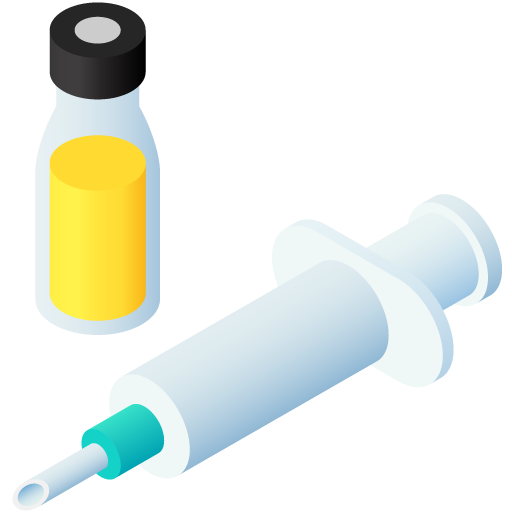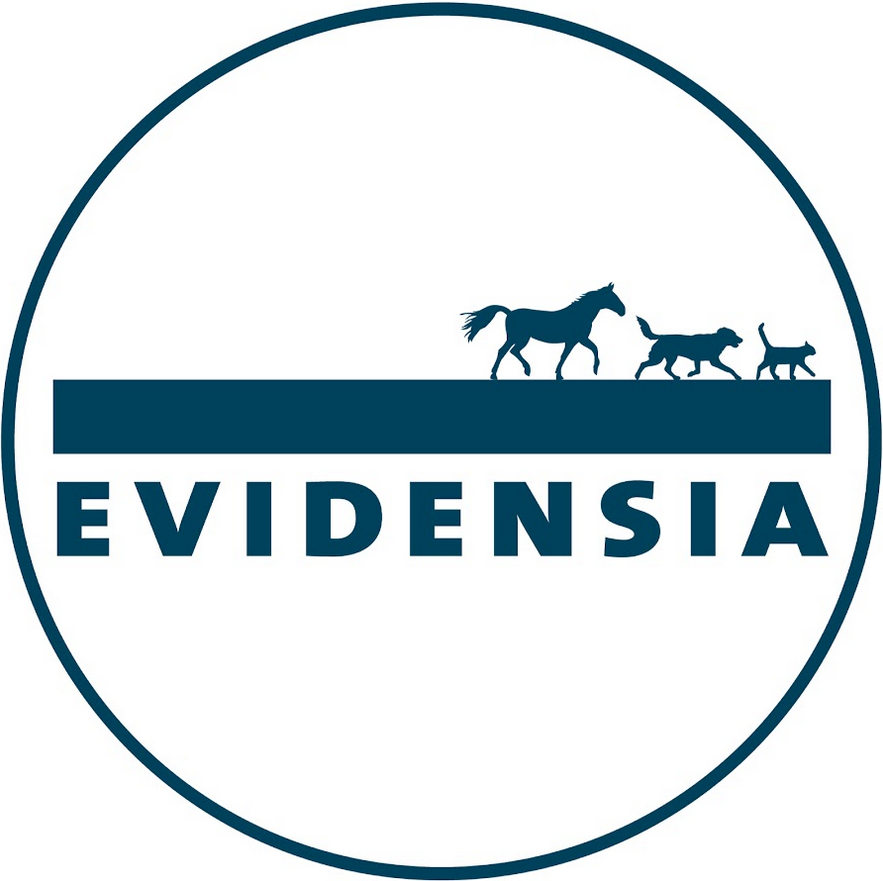Similar packages
Rycarfa vet.
Active substance
ATC code
Species
Dogs and cats.
Indications
Dogs: For the control of post-operative pain and inflammation following orthopaedic and soft tissue (including intraocular) surgery.
Cats: For the control of post-operative pain following surgery.
Dose to be administered and administration route
Intravenous and subcutaneous use.
Dogs: The recommended dosage is 4.0 mg carprofen/kg bodyweight (1 ml/12.5 kg bodyweight). The veterinary medicinal product is best given pre-operatively, either at the time of premedication or induction of anaesthesia.
Cats: The recommended dosage is 4.0 mg/kg (0.24 ml/3.0 kg bodyweight), best given pre-operatively at the time of induction of anaesthesia. The use of a 1 ml graduated syringe is recommended to measure the dose accurately.
Clinical trial evidence in dogs and cats suggests only a single dose of carprofen is required in the first 24 hours perioperatively; if further analgesia is required in this period a half dose (2 mg/kg) of carprofen may be given to dogs (but not to cats) as necessary.
To ensure a correct dosage, body weight should be determined as accurately as possible.
In dogs, to extend analgesic and anti-inflammatory cover post-operatively, parenteral therapy may be followed with carprofen tablets at 4 mg/kg/day for up to 5 days.
For administration of the veterinary medicinal product a 21-gauge needle should be used.
The cap can be punctured up to 20 times. When puncturing more than 20 times, use a draw-off needle.
Adverse reactions
Dogs and cats:
|
Rare (1 to 10 animals / 10,000 animals treated): |
Renal disorder Hepatic disorder1 |
|
Undetermined frequency (cannot be estimated from the available data): |
Vomiting 2, loose stool 2, diarrhoea 2, blood in faeces 2,3, appetite loss 2 Lethargy 2 Injection site reaction 4 |
1 Idiosyncratic reaction.
2 Generally occur within the first treatment week and are in most cases transient and disappear following termination of the treatment but in very rare cases may be serious or fatal.
3 Occult
4 Following subcutaneous injection.
If adverse reactions occur, use of the veterinary medicinal product should be stopped and the advice of a veterinarian should be sought.
Reporting adverse events is important. It allows continuous safety monitoring of a veterinary medicinal product. Reports should be sent, preferably via a veterinarian, to either the marketing authorisation holder or its local representative or the national competent authority via the national reporting system. See the package leaflet for respective contact details.
Dispensing
POM-VSUMMARY OF PRODUCT CHARACTERISTICS
1. NAME OF THE VETERINARY MEDICINAL PRODUCT
Rycarfa 50 mg/ml solution for injection for dogs and cats
2. QUALITATIVE AND QUANTITATIVE COMPOSITION
Each ml contains:
Active substance:
|
Carprofen Excipient: |
50 mg |
|
Benzyl alcohol (E1519) |
10 mg |
For the full list of excipients, see section 6.1.
3. PHARMACEUTICAL FORM
Solution for injection.
Clear, pale yellow coloured solution.
4. CLINICAL PARTICULARS
4.1 Target species
Dogs and cats.
4.2 Indications for use, specifying the target species
Dogs: For the control of post-operative pain and inflammation following orthopaedic and soft tissue (including intraocular) surgery.
Cats: For the control of post-operative pain following surgery.
4.3 Contraindications
Do not use in animals suffering from cardiac, hepatic or renal disease or gastrointestinal problems, where there is a possibility of gastrointestinal ulceration or bleeding, or hypersensitivity to carprofen or any other NSAIDs or any excipients of this product.
Do not administer by intramuscular injection.
Do not use after surgery which was associated with considerable blood loss.
Do not use in cats on repeated occasions.
Do not use in cats less than 5 months of age.
Do not use in dogs less than 10 weeks of age.
See also section 4.7.
4.4 Special warnings for each target species
None.
4.5 Special precautions for use
Special precautions for use in animals
Do not exceed the recommended dose or duration of treatment.
Due to the longer half life in cats and narrower therapeutic index, particular care should be taken not to exceed the recommended dose and the dose should not be repeated.
Use in aged dogs and cats may involve additional risk.
If such use cannot be avoided, such animals may require a reduced dosage and careful clinical management.
Avoid use in any dehydrated, hypovolaemic or hypotensive animals, as there is a potential risk of increased renal toxicity.
NSAIDs can cause inhibition of phagocytosis and hence in the treatment of inflammatory conditions associated with bacterial infection, appropriate concurrent antimicrobial therapy should be instigated.
Special precautions to be taken by the person administering the veterinary medicinal product to animals
Care should be taken to avoid accidental self-injection.
Carprofen, in common with other NSAIDs, has been shown to exhibit photosensitising potential in laboratory animals. Avoid skin contact with the product.
Should this occur, wash the affected area immediately.
People with known hypersensitivity to carprofen or to any of the excipients should avoid contact with the veterinary medicinal product.
4.6 Adverse reactions (frequency and seriousness)
Typical undesirable effects associated with NSAIDs such as vomiting, soft faeces/diarrhoea, faecal occult blood, loss of appetite and lethargy have been reported. These adverse reactions occur generally within the first treatment week and are in most cases transient and disappear following termination of the treatment but in very rare cases may be serious or fatal.
If adverse reactions occur, use of the product should be stopped and the advice of a veterinarian should be sought.
As with other NSAIDs there is a risk of rare renal or idiosyncratic hepatic adverse events.
Occasionally reactions at the injection site may be observed following subcutaneous injection.
The frequency of adverse reactions is defined using the following convention:
- very common (more than 1 in 10 animals treated displaying adverse reaction(s))
- common (more than 1 but less than 10 animals in 100 animals treated)
- uncommon (more than 1 but less than 10 animals in 1,000 animals treated)
- rare (more than 1 but less than 10 animals in 10,000 animals treated)
- very rare (less than 1 animal in 10,000 animals treated, including isolated reports).
4.7 Use during pregnancy, lactation or lay
Laboratory studies in laboratory animals (rat, rabbit) have shown evidence of foetotoxic effects of carprofen at doses close to the therapeutic dose.
The safety of the veterinary medicinal product has not been established during pregnancy and lactation. Do not use in dogs or cats during pregnancy or lactation.
4.8 Interaction with other medicinal products and other forms of interaction
Do not administer other NSAIDs and glucocorticoids concurrently or within 24 hours of administration of the product. Carprofen is highly bound to plasma proteins and may compete with other highly bound drugs, which can lead to toxic effects.
Concurrent administration of potential nephrotoxic drugs should be avoided.
4.9 Amounts to be administered and administration route
For intravenous or subcutaneous administration
Dogs: The recommended dosage is 4.0 mg carprofen/kg bodyweight (1 ml/12.5 kg bodyweight). The product is best given pre-operatively, either at the time of premedication or induction of anaesthesia.
Cats: The recommended dosage is 4.0 mg/kg (0.24 ml/3.0 kg bodyweight), best given pre-operatively at the time of induction of anaesthesia. The use of a 1 ml graduated syringe is recommended to measure the dose accurately.
Clinical trial evidence in dogs and cats suggests only a single dose of carprofen is required in the first 24 hours perioperatively; if further analgesia is required in this period a half dose (2 mg/kg) of carprofen may be given to dogs (but not to cats) as necessary.
The weight of treated animals should be accurately determined before administration.
In dogs, to extend analgesic and anti-inflammatory cover post-operatively, parenteral therapy may be followed with carprofen tablets at 4 mg/kg/day for up to 5 days.
For administration of the product a 21-gauge needle should be used.
The cap can be punctured up to 20 times. When puncturing more than 20 times, use a draw-off needle.
4.10 Overdose (symptoms, emergency procedures, antidotes), if necessary
There is no specific antidote for carprofen overdosage but general supportive therapy as applied to clinical overdosage with NSAIDs should be applied.
4.11 Withdrawal period(s) Not applicable.
5. PHARMACOLOGICAL PROPERTIES
Pharmacotherapeutic group: Antiinflammatory and antirheumatic products, nonsteroids
ATCvet code: QM01AE91
5.1 Pharmacodynamic properties
Carprofen possesses anti-inflammatory, analgesic and antipyretic activity. Like most other NSAID’s, carprofen is an inhibitor of the enzyme cyclo-oxygenase of the arachidonic acid cascade.
However, the inhibition of prostaglandin synthesis by carprofen is slight in relation to its anti-inflammatory and analgesic potency. The precise mode of action of carprofen is not clear.
Carprofen is a chiral drug with the S(+) enantiomer being more active than the R(-) enantiomer. There is no chiral inversion between the enantiomers in-vivo.
5.2 Pharmacokinetic particulars
Carprofen is well absorbed after subcutaneous administration with peak plasma concentrations achieved within 3 h after administration.
The volume of distribution is small. Carprofen is highly protein bound.
Carprofen is characterized by a half-life of approximately 10 hours in dogs. In cats, the elimination half-life is longer ranging from 9 to 49 hours after intravenous administration (mean of ~ 20 hrs).
6. PHARMACEUTICAL PARTICULARS
6.1 List of excipients
Benzyl alcohol (E1519)
Arginine
Glycocholic acid
Hydrochloric acid, dilute (for pH adjustment)
Lecithin
Sodium hydroxide
Water for injections
6.2 Major incompatibilities
In the absence of compatibility studies, this veterinary medicinal product must not be mixed with other veterinary medicinal products.
6.3 Shelf life
Shelf-life of the veterinary medicinal product as packaged for sale: 3 years. Shelf-life after first opening the immediate packaging: 28 days.
6.4 Special precautions for storage
Store in a refrigerator (2°C – 8°C).
Do not freeze.
Once opened do not store above 25oC.
6.5 Nature and composition of immediate packaging
Type I glass vial (amber glass): 1 vial of 20 ml solution for injection with bromobutyl rubber stopper and aluminium seal, in a box.
6.6 Special precautions for the disposal of unused veterinary medicinal product or waste materials derived from the use of such products
Any unused veterinary medicinal product or waste materials derived from such veterinary medicinal product should be disposed of in accordance with local requirements.
7. MARKETING AUTHORISATION HOLDER
KRKA, d.d., Novo mesto
Šmarješka cesta 6
8501 Novo mesto
Slovenia
8. MARKETING AUTHORISATION NUMBER
Vm 01656/4174
9. DATE OF FIRST AUTHORISATION
13 March 2014
10. DATE OF REVISION OF THE TEXT
February 2019
Approved: 13 February 2019
![]()

 TRUSTED SOURCE
TRUSTED SOURCE








